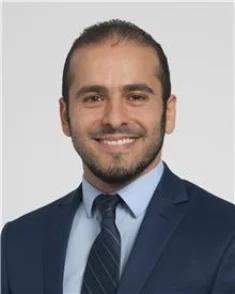Physicians Discuss Supportive Care Practices in R/R Multiple Myeloma
In the first article of a 2-part series, Jack Khouri, MD, discussed the challenges that come with the toxicity profile of selinexor and how physicians can manage these adverse events.
CASE SUMMARY
A 70-year-old White woman was diagnosed with stage 1 multiple myeloma and fluorescence in situ hybridization showed deletion 17p (del17p) in her disease. The patient had a prior medical history of stage 3 chronic kidney disease and moderate renal impairment. She declined autologous stem cell transplant and received lenalidomide (Revlimid), bortezomib (Velcade), and dexamethasone (RVd). She had a very good partial response (VGPR), so lenalidomide maintenance was continued. Two years later the patient relapsed after reporting mild fatigue but continued to work full-time.
Bone marrow plasma cells, light chains, and M protein were all rising, and her kidney function worsened to stage IV chronic kidney disease. The patient was then given daratumumab (Darzalex), pomalidomide (Pomalyst), and dexamethasone and had a VGPR. One year later she experienced a second relapse of her disease with renal function continuing to decline. The patient was started on selinexor (Xpovio), bortezomib, and dexamethasone (XVd) based on her progressive renal impairment, del17p status, and prior therapies. She achieved a VGPR.
DISCUSION QUESTIONS
- How do you counsel patients when discussing selinexor as a treatment option?
- If you use selinexor, what steps and supportive care do you routinely perform to improve tolerability?
- What is your approach to dose reduction?
- What is your approach to nausea/vomiting prophylaxis and hydration?
JACK KHOURI, MD: Anybody have feedback about adverse events [AEs] or dosing with selinexor?
NEERAJ MAHAJAN, MD: I feel like this drug was created at the wrong time, because it has to compete with [newer methods of treatment]. I think the patient experience with it is more like pre-hospice…that’s how [I consider patients at this stage]. At that stage, the AE management is quite tough, even with a dose reduction and other management methods. With this BOSTON trial [NCT03110562] regimen,1 I'm not sure where to put it in, in the context of all the other triplet [regimens that are available to us], so my usage of it has gone down considerably.

SHERIF FARAG, MD: Looking at the comparator arm of bortezomib and dexamethasone [Vd], where most patients have not received more modern drugs, it's hard to extrapolate those results to the current patient populations, because I don't think many people are going to be using this as second-line treatment. I find it hard to use those data and extrapolate it, and I have a problem with the fact that the duration of response is the same but progression-free survival [PFS] was higher.1 I just wonder whether it may have been a statistical fluke, almost, that you got a better PFS. Otherwise you have to postulate that patients on Vd were dying from non-relapse causes, which is hard to understand since the others are also getting Vd. [In my opinion], the results are difficult to apply to the current populations of patients.
KHOURI: The way I use selinexor [is that its] a drug that works well in combination therapy... and the way I use it is with in combination with either pomalidomide or carfilzomib [Kyprolis]. I do use it with bortezomib, rarely, in patients who have relapsed after…at least 2 to 3 lines of treatment. I agree with your point about the PFS, but the thing is that the trial did accrue a lot of patients, and the numbers are the numbers, but in the real-world setting we have seen good data with selinexor,2 especially in combination with carfilzomib.3 I don't think bortezomib is the right combination for this drug. I think carfilzomib, or even maybe pomalidomide, are better drugs to combine with this medication.
I think the reason that people shy away from using selinexor is that the [toxicity] profile is not very favorable,1 and that's understandable, but I think with implementing the right supportive care a lot of patients will do well, and this is what we do here at Cleveland Clinic. What we do for these patients is that we monitor them [during] their initial cycle. What I usually tell patients is that once they start on selinexor, the first cycle is going to be the hardest, and once we get them through the first cycle, they do better. So, the first cycle is the hardest and we make sure that we keep patients hydrated with the treatments every week, at least for the first cycle…. I then get complete blood counts and chemistries, and we check in with them about their diet…. If they do well with the first cycle, then the likelihood of AEs after the first cycle is much less and drops [throughout treatment].
References:
1. Grosicki S, Simonova M, Spicka I, et al. Once-per-week selinexor, bortezomib, and dexamethasone versus twice-per-week bortezomib and dexamethasone in patients with multiple myeloma (BOSTON): a randomised, open-label, phase 3 trial. Lancet. 2020;396(10262):1563-1573. doi:10.1016/S0140-6736(20)32292-3
2. Kastritis E, Gavriatopoulu M, Solia E, et al. Real world efficacy and toxicity of selinexor: importance of patient characteristics, dose intensity and post progression outcomes. Clin Lymphoma Myeloma Leuk. 2023:S2152-2650(23)00232-X. doi:10.1016/j.clml.2023.07.013
3. Gasparetto C, Schiller GJ, Tuchman SA, et al. Once weekly selinexor, carfilzomib and dexamethasone in carfilzomib non-refractory multiple myeloma patients. Br J Cancer. 2022;126(5):718-725. doi:10.1038/s41416-021-01608-2